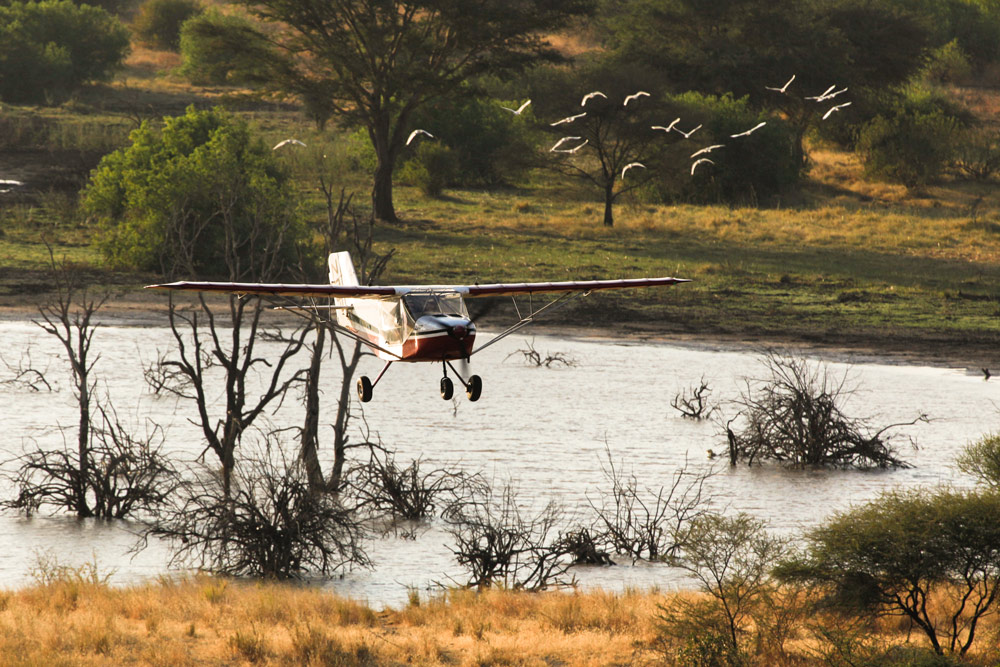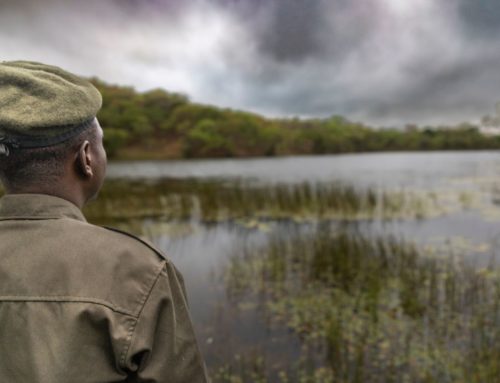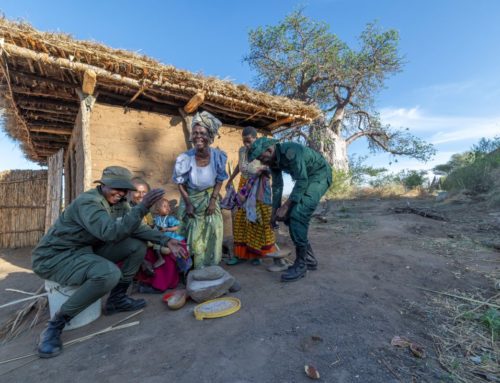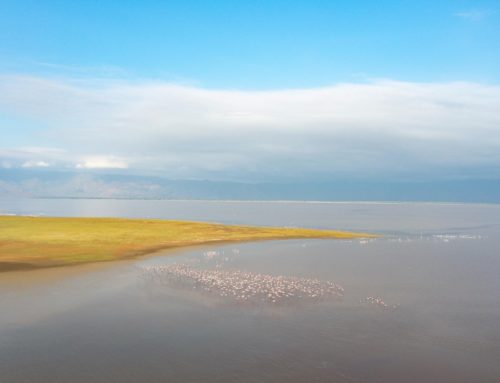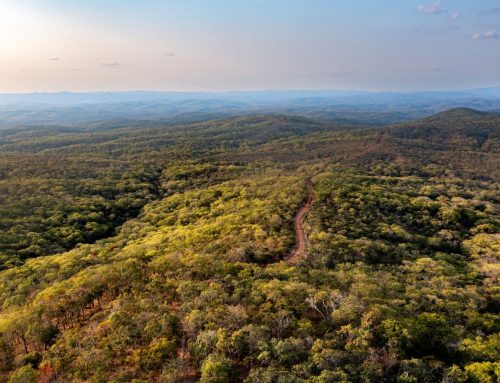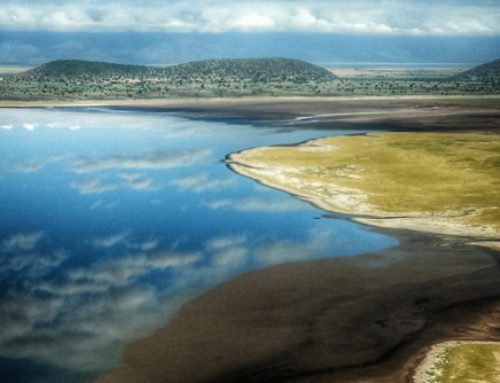Running in a dead sprint and with spears raised, the warriors had closed within 100 meters of a lioness and her two cubs. The hunt had gone down a dry riverbed within Manyara Ranch. In minutes or less, the 40 or so young men could easily catch up with their prey and stab them to death.
Then, from the sky, a strange vision above the rising sun distracted the men and caused them to take cover. It was a Rans 6-S Coyote II on an early morning Honeyguide training flight. Repeated dives by the light aircraft kept the warriors belly-first in the sand and created more distance between them and the big cat family. Soon thereafter, the ranch’s rangers arrived on motorbikes and coordinated their pursuit with the aerial patrol.
With local authorities also on their way and in radio contact with the aircraft, the hunting party had no choice but to turn back. The lioness and her cubs escaped.
Cattle killed, revenge sought
Trouble had started brewing on the evening of May 26th when a lone cow had been left grazing unattended within Manyara Ranch, a 35,000-acre conservation area managed jointly by the African Wildlife Foundation (AWF) and the Tanzania Land Conservation Trust (TLCT) in the heart of the Tarangire-Manyara ecosystem. A lion quickly slaughtered such easy pickings for an early dinner. When word reached the livestock keepers, local warriors assembled and threatened to go kill lions.
Manyara Ranch’s rangers, who themselves all come from local pastoralist communities surrounding the area, had already intervened by that time and, with dusk already setting in and making a hunt more challenging, they readily persuaded leaders and elders to placate the warriors for the night.
By the following morning, however, the warriors had regrouped and set out into the ranch in search of cats. Fortunately, the Coyote II caught up with them just before a would-be kill. For that day at least, the threat of a killing subsided, the family remained saved.
Complex issue, long-term solutions
After the warriors had called off the hunt, their laingwanani, or traditional age-set leader, came to speak with them, noting that the cow had died, in part, because it was left without a proper adult herder in a conservancy that has a well-known pride of lions.
Human-wildlife conflicts, especially those involving livestock herders and predators, are extremely complex. For example, livestock are incredibly valuable to the Maasai for their milk, meat and market value and are also the central component of their cultural identity. Large predators are able to breach traditional corrals to attack livestock; as a result, retaliatory lion killing has become common, aggravated by inadequate husbandry methods and lack of education about predator behavior.
This year, the villages between Tarangire National Park and Manyara Ranch have suffered a spree of retaliatory lion killings. On New Year’s Day, some six lions died at the hands of villagers outside of Tarangire National Park during a chaotic scene; later it appeared that some of the lion killings had a political edge to them based on local grievances. Since then, four more lions have been killed in the area, including within Manyara Ranch.
For Maasai warriors, traditional lion hunts, or olamayio, have also been a source of great pride as a rite of passage practiced for centuries. The brave man who strikes the lion first will be fawned upon by women and remembered as the lion killer for the rest of his life.
While traditional lion hunts have died out among many Maasai communities, they still happen in Tanzania, and some believe that the new rising age-set of warriors, named the nyangulo and now in their late teens and early twenties, have a hunger to hunt lions and thus prove their own prowess.
By far, hyenas kill the most livestock in East Africa, and, in total, predators take between .4-3.3% of herds. But lions are often the first to fall victim to retaliatory hunts. Perhaps this is due to the role of olamayio in Maasai culture, but, frankly, lions are also much easier to catch than other predators. Hyenas and wild dogs, for example, den underground and leopards stick to the trees; lions often sleep in the open. While cheetahs can run up to 120 kilometers per hour (roughly 75 mph), muscular and bulky lions can only run fast (up to 80 kph or 50 mph) for extremely short sprints often lasting mere seconds. This is why the warriors almost caught up to the lions in Manyara Ranch on May 27th.
When it comes to retaliatory wildlife killings by local Tanzanians, critics must also be careful not to exploit double standards. In the US, for example, cattle ranchers in some states can readily shoot and kill wolves that are preying upon or even threatening their livestock. When coyotes invade suburban backyards and eat up little pet dogs, aggrieved and angry middle-class Americans often call for the police to exterminate the wild canines.
East Africans are, in fact, far more tolerant of human-wildlife conflict than almost all people in the world. Furthermore, in Tanzania, hunting a lion for sport is allowed and the license can cost up to $25,000. So how can a Maasai warrior be blamed simply for defending his livelihood?
Protect both livestock and lions
Fortunately, there are groups in East Africa working to protect both livestock and lions. Honeyguide’s partner, Tanzania People & Wildlife Fund (TPW), for example, has pioneered their Living Walls across the Simanjiro Plains and Tarangire-Manyara corridor over the past decade, and the innovative fence has been proven to be 99% effective in keeping predators out of cattle corrals.
Additionally, TPW works extremely closely with livestock herders and communities, and has critical complementary programs in grazing and rangelands management, conversation enterprises, and wildlife protection. Recently, TPW expanded its program and is working alongside Honeyguide in select villages of Natron WMA and Enduimet WMA.
Our longtime donor and cross-border partner, Big Life Foundation, has also been active and successful in mitigating human-predator conflicts for years in the group ranches around Amboseli National Park, including promoting the Maasai Olympics. Big Life has also more recently partnered there with Lion Guardians, which implements its celebrated community-based monitoring and mitigation model in both Tanzania and Kenya. For every well publicized retaliatory killing, groups like these have intervened and prevented hundreds of others.
Across Tarangire-Manyara, the solution to retaliatory lion killings will not come easy. Some have called for the arrests and prosecution of lion killers, and, while that might be within Tanzanian law, it alone will not solve the longer term issue.
It will take the efforts of many partners and communities in order for lions to live on and thrive for generations to come.
Honeyguide manages the projects of Big Life in Tanzania. Honeyguide also receives support from such organizations as AWF, The Nature Conservancy, and USAID. Regional Air supports Honeyguide and Big Life and provides support for the Microlight in the Regional Air hanger in Arusha, Tanzania. The Manyara Ranch Conservancy, located between Lake Manyara and Tarangire National Parks, is presently managed by the African Wildlife Foundation.

